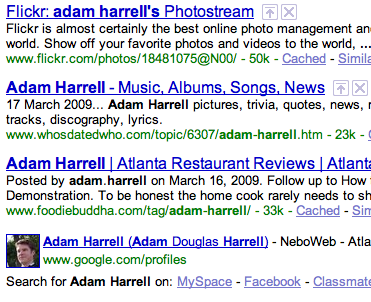
The golden rules of giving great feedback
Your ability to give good feedback can help make or break a project. If you follow these simple rules your projects will go quicker, run smoother and turn out better.
Listen carefully, and ask questions.
The first step to providing good feedback is understanding the rationale behind the decisions that were made. "I don't like the red." isn't good feedback. It's a personal preference disguised as feedback. Focus on giving feedback that is non-opinionated and provides an opportunity for the person that created the work to provide context. A question like, "This color isn't in our brand standards. What's the thinking behind using this particular red?", will help you understand the reason the decisions were made so your input will be more informed and valuable.
Start with the nice.
Try to accentuate the positive in the first part of your communication. If you always go straight into critiques/revisions then the person you're working with will adopt a defensive stance. The result will be a combative conversation in which you'll be attacking and they'll be defending. You're on the same team and should act accordingly.
B2B copy doesn't have to suck
We end up working with a fair number of B2B clients. It amazes me how often they complain about their services/product being dry and boring. Most of the time they sit down and pound a few meaningless pages of copy, or they work with a mediocre B2B marketing consultant to develop their website content.
The result is almost always the same, boring copy that reads like a laundry list of ultra-generic product benefits. I can recite these by memory: increased ROI, lowered cost, lowered support burden, greater flexibility. Whether they're selling hosting, contract manufacturing, or consulting — the benefits always end up being the same, regardless of what the product actually does.
The reality is that too many B2B companies are scared of actually having a personality. They confuse being interesting with being controversial. They forget that their target audience is made up of ordinary people who desire nothing more than to learn a little bit more about what their company does in as clear and conversational a manner as possible. A website shouldn't try to dazzle customers with bullsh*t and buzzwords.
How do you measure the value of design?
It's a fair question that deserves to be addressed. How should a company measure the value of design? What is the contribution that design makes to the bottom line?
This is a difficult problem. Sure there are numerous anecdotes that provide evidence that a focus on design leads to success (Apple, Google, Facebook etc). But, anytime you're attempting to isolate and measure a single variable in a complex environment it will be difficult.
A few years ago the British Council of Design commissioned a study that does provide some quantitative evidence. They created a stock index tracking the 61 firms that had won major awards in british design contests. This index fund outperformed its peers by over 200% during the study. This may not prove a causal link, but perhaps it proves at least a correlation between design and performance.
The best user experiences are invisible
The most seamless user experiences are often the least noticeable. They just work. You google something and it returns the right results. It's a variation of Clarke's 3rd law, instead of "Any sufficiently advanced technology is indistinguishable from magic", it is: "Any sufficiently advanced user experience is invisible to the user."
This is the reason that projects include user personas and audience goals. The core objective of a website should be to allow users to accomplish the tasks they set out to accomplish in the most efficient way possible. Whether people are visiting to purchase, to request more information or to be entertained. A good user experience shouldn't get in the way of the user's tasks.
Now, there are times that you want the experience to be notable. That you want to communicate a little bit extra in your user interactions. In these cases an interface is designed to draw attention to itself. But, at these times the core experience still needs to be as seamless as possible. If you were to strip away the extras (the humorous responses etc) the core experience should be as close to invisible as possible.
So next time your deciding on whether to run unaffiliated network ads on your website, or whether to require a form before downloading a white paper—think to yourself, does this help or hinder my user's experience. Am I interrupting them on their tasks? Is there anyway to make this a more elegant process?
Quick thoughts on Google Profiles.
Unless you've been hiding under a rock today, you've probably heard about Google Profiles. In case you haven't, these are essentially simple profile pages that will show up in search results when some googles you.
As you'd expect from google, the setup process is super simple. Fill out a couple highlights, import your photos from flickr/picasa, add a couple links and you're done.
What I'm not so wild about is the implementation into the search results. The design approach seems lazy. They're just putting the profiles at the bottom of the first page and making the type slightly smaller. If you want it to just blend in with the results, then why even bother making the type smaller. And honestly, no one really wants to be on the bottom of the first page for their own name. Google being Google however, I'm sure that they're currently testing numerous iterations and will end up going with whatever version the data tells them is most effective.
That being said, it was only a matter of time before they took this step. So go grab your profile before someone else with your name steals it.
